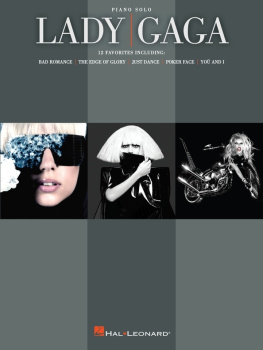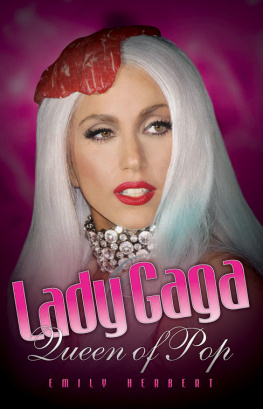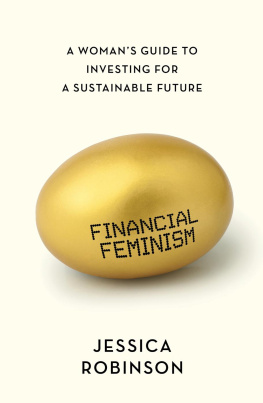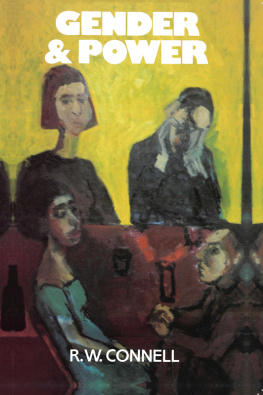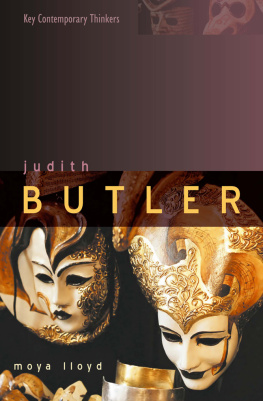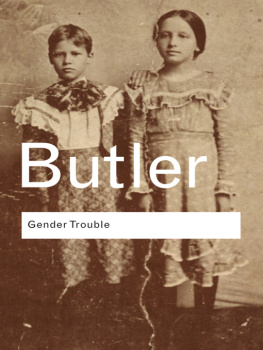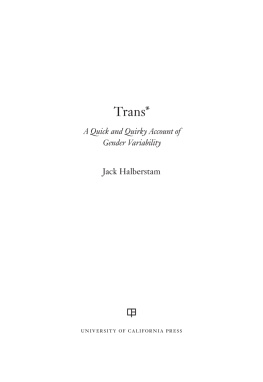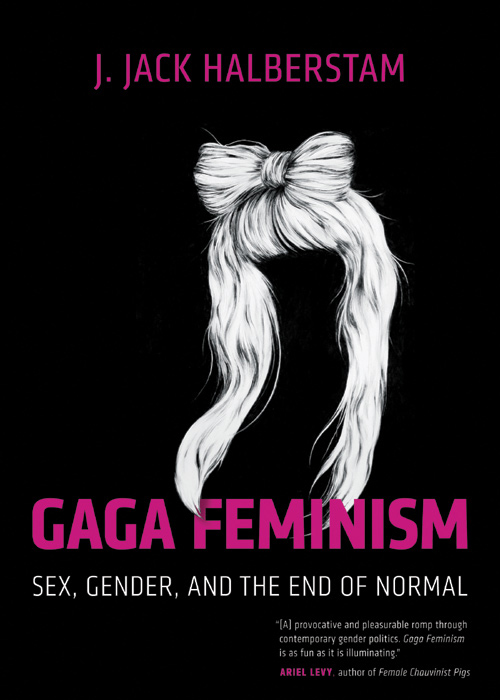OTHER BOOKS BY J. JACK HALBERSTAM
Skin Shows: Gothic Horror and the Technology of Monsters
Posthuman Bodies. Coedited with Ira Livingston
Female Masculinity
The Drag King Book. With Del LaGrace Volcano
In a Queer Time and Place: Transgender Bodies, Subcultural Lives
The Queer Art of Failure
OTHER BOOKS IN THE QUEER IDEAS SERIES
Queer (In)Justice: The Criminalization of LGBT People in the United States by Joey L. Mogul, Andrea J. Ritchie, and Kay Whitlock
God vs. Gay? The Religious Case for Equality by Jay Michaelson
Beyond (Straight and Gay) Marriage: Valuing All Families under the Law by Nancy D. Polikoff
From the Closet to the Courtroom: Five LGBT Rights Lawsuits That Have Changed Our Nation by Carlos A. Ball
OTHER BOOKS IN THE QUEER ACTION SERIES
Come Out and Win: Organizing Yourself, Your Community, and Your World by Sue Hyde
Out Law: What LGBT Youth Should Know about Their Legal Rights by Lisa Keen

For Maca
A NOTE FROM THE SERIES EDITOR
The American lesbian, gay, bisexual, transgender, and queer movement has never been only a movement about civil rights. From its beginnings in the 1950s, groups like the Mattachine Society and Daughters of Bilitis understood the power of popular culture. The gay liberation movement of the early 1970s understood that the way to political power was through popular culture. It is now a commonplace to state that queer people have always been avid producers of culture, but the reality is that they have also always been at the forefront of critiquing and analyzing culture. From Oscar Wilde to Susan Sontag, Virginia Woolf to Gore Vidal, LGBT people have used their queer eye to understand, and explain, the complexity of how culture shapes the social, political, emotional, and psychic worlds around us. While much of this analysis was enormously helpful in exposing underlying, often coded, messages that were embedded in popular culture, its intent and objective was to correct, even reform, these messages.
J. Jack Halberstams Gaga Feminism: Sex, Gender, and the End of Normal is a work that is uninterested in reformits intent is to be revolutionary and to reconceive of revolution now. Halberstams love of popular culturefrom SpongeBob SquarePants to Judd Apatow films to (and maybe especially) Lady Gagais vibrantly evident here. Halberstam is passionately interested in seeing how many manifestations of popular entertainment, which we watch, listen to, and experience every day, contain within them both a blueprint of dominant culture and its emphasis on stasis, norms, and convention, and a vivacious and joyful template for how we can transform the world into a place that no longer depends upon norms, and values maverick improvisations of difference and freedom. Drawing on anarchism, surrealism, radical feminism, queer theory, gender theory, international liberation movements, and grassroots political movements such as Occupy Wall Street, Halberstam forces us to think about how our personal investments in popular culture provide not only an understanding of our oppression, but a key to our liberation. Halberstams background as a cultural critic, a transgender theorist, and an activist all come together here to provide us with a new way to understand the queerness of the worlds we already inhabit and the possibilities for other worlds that we would like to occupy. Gaga Feminism: Sex, Gender, and the End of Normal names, paradoxically, a state of living of which Halberstam approvesit is a book that brings us back to the revolutionary ideas of the gay liberation movement as it propels us forward to as yet unknown and unpredictable futures, futures that we write for ourselves as soon as we loosen our grip on the usual, the normative, and the known. Gaga feminism, with its manifestos and rants, its analyses and readings, opens up a new conversation and embraces the anarchist potential of our dynamic present.
MICHAEL BRONSKI
Series Editor, Queer Action/Queer Ideas
PREFACE
Going Gaga
Ive been trained to love my darkness.
Lady Gaga
I am not real. I am theater.
Lady Gaga
In September 2011 at the MTV Video Music Awards, Lady Gaga, in keeping with her reputation for pushing boundaries, showed up in drag as Jo Calderone. She stayed in character the whole night, gave a long monologue about being Gagas boyfriend, sang one of her songs, accepted awards on behalf of Lady Gaga, flirted with Britney Spears, freaked some people out, delighted others, and generally went gaga! While mainstream commentators could not decide whether the performance was cool or creepy (Sheila Marikar, ABC News), others compared Lady Gagas performance unfavorably to Annie Lennoxs drag king escapade at the Grammys in 1984. Fans, the little monsters, loved it, and generally speaking the stunt enhanced Lady Gagas reputation as a cutting-edge performance artist and a risk taker.
The performance was indeed gutsy, especially coming, as it did, from someone whose sexuality and gender have been scrutinized since she first burst on the music scene in 2008. Who is Lady Gaga? What do her performances mean? And more importantly, what do her gender theatrics have to say to young people about identity, politics, and celebrity? Is Lady Gaga an icon for a new kind of politics, or a charlatan just living out her moment in the spotlight? This book asserts that Lady Gaga is a symbol for a new kind of feminism. Recognizing her power as a maestro of media manipulation, a sign of a new world disorder, and a loud voice for different arrangements of gender, sexuality, visibility, and desire, we can use the world of Gaga to think about what has changed and what remains the same, what sounds different and what is all too familiar, and we can go deep into the question of new femininities.
Lady Gaga is, by her own admission, a fame monster: she is positively Warholesque in her love of attention and absolutely masterful in her use of celebrity, fashion, and gender ambiguity to craft and transmit multiple messages about new matrices of race, class, gender, and sexuality, and even about the meaning of the human. Some of these forms of being arise out of creative uses of the platform offered by celebrity; others arise out of wild relations to a series of lively objects, but ultimately being gaga means being phony.
To be clear, what I am calling gaga here certainly derives from Lady Gaga and has everything to do with Lady Gaga but is not limited to Lady Gaga. In other words, just as Andy Warhol was a channel for a set of new relations between culture, visibility, marketability, and queerness, so the genius of gaga allows Lady Gaga to become the vehicle for performing the very particular arrangement of bodies, genders, desires, communication, race, affect, and flow that we might now want to call gaga feminism. Gaga feminism, or the feminism (pheminism?) of the phony, the unreal, and the speculative, is simultaneously a monstrous outgrowth of the unstable concept of woman in feminist theory, a celebration of the joining of femininity to artifice, and a refusal of the mushy sentimentalism that has been siphoned into the category of womanhood. But this is not necessarily a brand-new feminism, and Lady Gaga herself is certainly not an architect of a new gender politics. Rather, there is some relation in her work between popular culture, feminine style, sound, and motion that hints at evolving forms of sex and gender at a moment when both are in crisis. Lady Gaga, as both a media product and a media manipulator, as a megabrand of sorts, becomes the switch point for both kinds of body futuresshe represents both an erotics of the surface and an erotics of flaws and flows, and she is situated very self-consciously at the heart of new forms of consumer capitalism.



